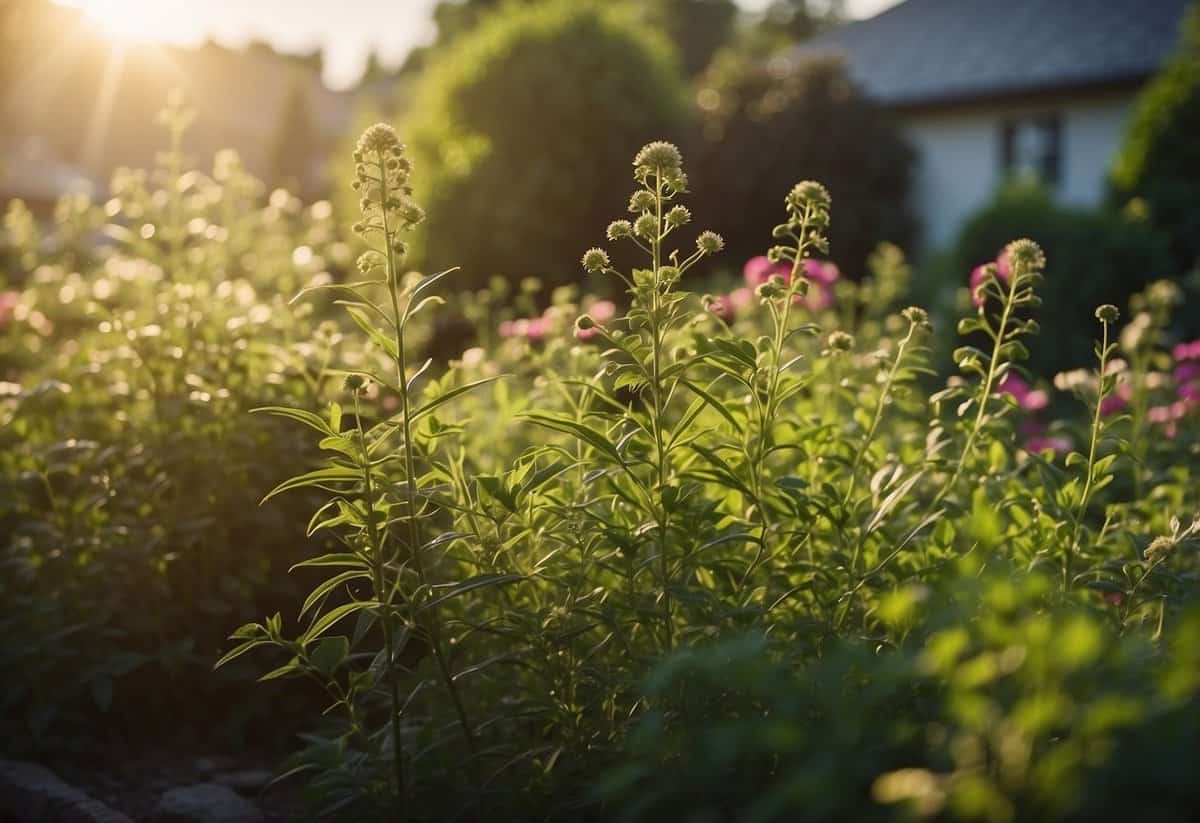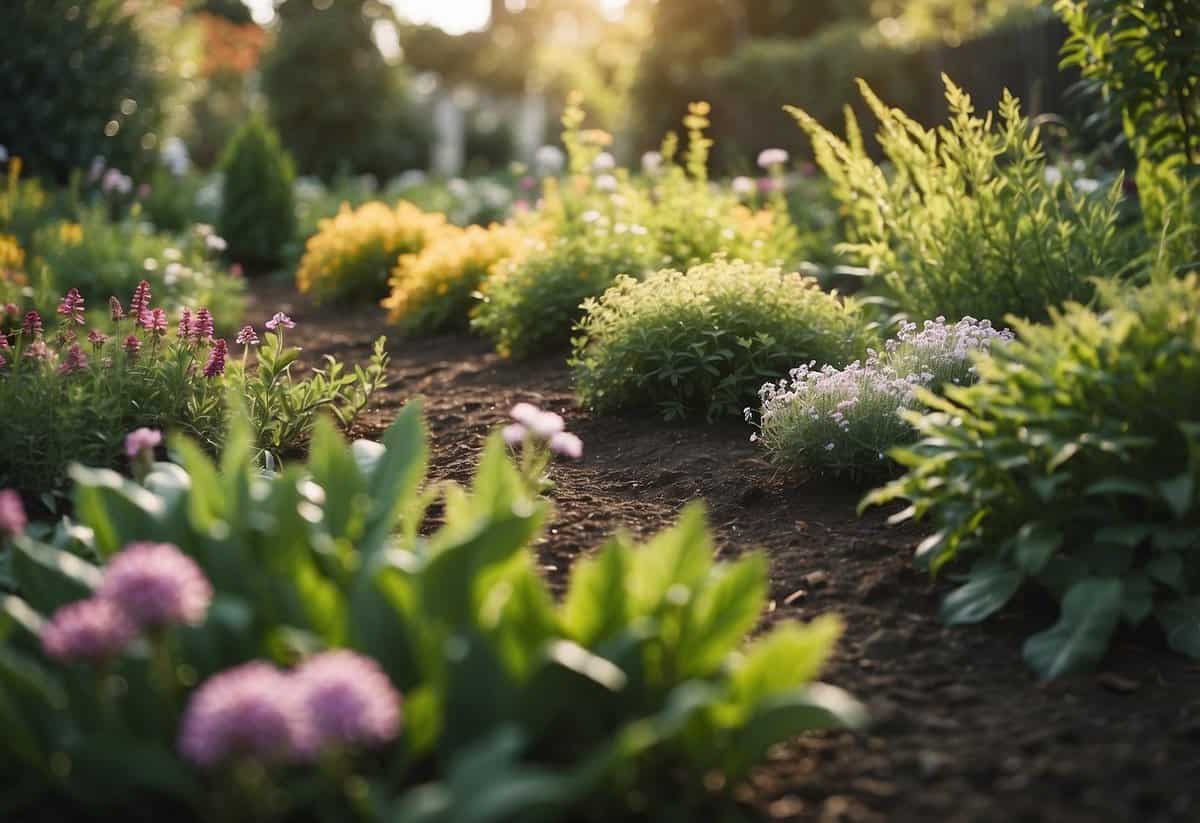Garden Weed Tips: Easy Ways to Keep Your Plants Healthy
Gardening can be a rewarding hobby, but weeds often make it more challenging. These unwanted plants can take over your garden, making it look messy and stealing nutrients from your beloved flowers and veggies. Whether you’re new to gardening or a seasoned pro, dealing with weeds is something you can’t ignore.

How can you keep your garden weed-free and thriving? Finding effective weed control methods is key to maintaining a healthy, beautiful garden. In this article, you’ll learn simple and practical tips to keep those pesky weeds under control for good.
1) Use a Pre-Emergent Herbicide

Applying a pre-emergent herbicide can prevent weed seeds from sprouting. This helps keep your garden neat and reduces the need for constant weeding.
In the early spring, spread the herbicide evenly over the soil. Make sure the soil temperature is right, ideally between 55 and 70 degrees Fahrenheit.
For granular products, use a rake to mix the herbicide into the top 1-2 inches of soil. This helps activate the product and ensures better coverage.
Follow the instructions on your herbicide product for the best results.
2) Mulch Your Garden Beds

Mulching your garden beds can help keep weeds at bay. Mulch blocks sunlight from reaching the soil, which prevents weed seeds from sprouting. It’s a simple and effective way to keep your garden looking neat.
Choose organic mulches like chopped leaves, straw, or wood chips. These add nutrients to your soil as they break down. Avoid using rocks or rubber mulch, as these can heat up and harm your plants. Learn more.
Apply a thick layer of mulch, roughly 2-3 inches deep. This helps to keep moisture in the soil and further suppresses weed growth.
3) Hand Pull Weeds Regularly

Hand pulling weeds is a simple and effective way to keep your garden tidy. It’s best to pull them when the soil is moist because it’s easier to remove the roots this way.
To avoid leaving bits of the root behind, make sure to pull slowly and steadily. Younger weeds are easier to remove, so try to catch them early.
In addition to protecting your plants, consider using basic tools like hand hoes or trowels for those stubborn, deeply rooted weeds.
Stay hydrated and take breaks to avoid getting too tired. Happy gardening!
4) Utilize Vinegar for Small Weeds

Vinegar can be an effective tool for tackling small weeds in your garden.
Mix one gallon of white vinegar with a tablespoon of dish soap. You can also add a cup of salt to the mixture if you like. Stir it well.
Pour the mixture into a garden sprayer. Spray it directly onto the weeds’ leaves.
Be careful not to spray on your desired plants. The acid in the vinegar will kill the leaves before reaching the root system.
For tougher weeds, you may need a stronger vinegar like those with 20-30% acetic acid.
5) Try Boiling Water for Cracks

Boiling water is an effective way to tackle weeds growing in cracks and crevices. Heat a pot of water until it boils. Carefully pour the boiling water directly onto the weeds.
This method works well on small, young weeds. Be cautious not to splash, as the hot water can burn.
For persistent weeds, more than one treatment might be necessary. This is a natural and chemical-free option, ideal for those looking to avoid harmful pesticides. Learn more about this method here.
6) Use Corn Gluten Meal

Corn gluten meal is a by-product of corn milling that can prevent weeds from sprouting. It works by inhibiting root growth during seed germination.
Apply corn gluten meal to your lawn in early spring before weeds start to grow. You can also apply it in late summer or early fall to control winter annual weeds.
Using a spreader helps to ensure an even application. Spread 20 pounds per 1,000 square feet for best results. After applying, water your lawn lightly to help the meal settle into the soil.
7) Diligently Water Your Plants

Watering is crucial for a healthy garden. Always check the soil before adding water. Insert your finger about 2 inches into the soil. If it feels dry, it’s time to water.
Use methods like a milk jug with holes for a steady drip.
Water your plants deeply to encourage strong roots. Consistent watering helps your plants thrive and reduces weed competition.
8) Plant Ground Cover Plants

Ground cover plants can be a great way to keep weeds at bay. They spread out over the soil, making it hard for weeds to grow.
Before planting, clear the area of any grass and weeds. Arrange the plants in a staggered pattern, not in rows.
Some good choices include creeping phlox and sedum. These plants are low-maintenance and do well in many gardens. Plant them 6-12 inches apart for best results. You can find more details on planting ground cover.
9) Solarize Your Garden Soil

Solarizing your garden soil is a natural way to control weeds and pests.
You can do this by watering the soil, then covering it with clear plastic. The heat from the sun will get trapped under the plastic, which can kill weeds and pests.
This method is chemical-free and cost-effective. Learn more about the benefits of solarizing your soil.
10) Implement Proper Spacing

Proper spacing is key for a healthy cannabis garden. When plants are too close together, they can block each other from getting enough light, water, and nutrients.
Spacing your cannabis plants correctly helps them grow strong and produce high yields. It also prevents the spread of disease and pests by allowing better air circulation.
Make sure you have enough space between your plants to let them expand both horizontally and vertically. This allows each plant to thrive and grow to its full potential. Check out more on spacing your cannabis plants for best results.
Understanding Garden Weeds

To maintain a healthy garden, it’s important to know which weeds are common, why they grow, and how they affect your plants’ health.
Common Types of Garden Weeds
There are many types of garden weeds that can invade your garden. Some of the most common ones include dandelions, crabgrass, pigweed, and thistle.
Dandelions have bright yellow flowers and fluffy seed heads. Crabgrass spreads quickly with its thick, green blades. Pigweed can grow up to six feet tall and produces thousands of seeds. Thistle is known for its sharp, prickly leaves and purple flowers.
Each of these weeds has unique characteristics, making them identifiable and easier to control.
Why Weeds Grow in Gardens
Weeds grow in gardens due to a mix of factors. One reason is the presence of disturbed soil. When you till or dig, weed seeds that are buried in the soil come to the surface and start to grow.
Another reason is sunlight exposure. Weeds thrive in areas with lots of sunlight, especially if the soil is left bare. Improper watering can also encourage weed growth. Overwatering or shallow watering can help weed seeds germinate and outcompete garden plants.
Finally, poor garden maintenance, like not removing weeds regularly, allows them to spread and take over. Keeping your garden soil healthy and free from disturbances can help reduce the number of weeds.
The Impact of Weeds on Plant Health
Weeds can have a negative impact on your garden’s health. They compete with your plants for resources like water, sunlight, and nutrients. This competition can cause your garden plants to become weak and less productive.
Some weeds can host pests and diseases that then spread to your garden plants. For example, pigweed can attract beetles that also damage crops. Weeds like thistle can make it difficult to walk through your garden and harvest crops due to their sharp leaves.
Removing weeds not only helps your plants grow better but also keeps your garden looking neat and cared for.
Prevention and Maintenance

To keep your garden weed-free, focus on mulching, proper plant spacing, and regular monitoring. These methods will help you maintain a healthy and beautiful garden.
Mulching Techniques
Mulching is a powerful way to prevent weeds from taking over your garden. It blocks sunlight from reaching weed seeds, stopping them from germinating. Organic mulches, like shredded leaves, straw, or wood chips, decompose over time and enrich the soil.
Steps for Effective Mulching:
- Select mulch: Choose the right type for your garden. Straw and wood chips work well.
- Layer thickness: Aim for a mulch layer between 1-3 inches deep. This thickness is enough to suppress most weeds.
- Leave space around plants: Create a small, mulch-free zone around plant stems to prevent rot. Read more about this in Weed-Free Gardening by Bob Vila.
Proper Plant Spacing
Proper plant spacing is crucial for a weed-free garden. Crowded plants can deny weeds the space and sunlight they need to grow. When plants are spaced correctly, their leaves create a natural barrier that suppresses weed growth.
Tips for Proper Plant Spacing:
- Follow guidelines: Adhere to the spacing recommendations on seed packets or plant tags.
- Consider mature size: Plan for the plants’ full size to avoid overcrowding.
- Use ground covers: Plants like clover or creeping thyme can fill gaps and reduce weed growth.
Plant spacing not only reduces weeds but also promotes healthier plants.
Regular Monitoring and Early Detection
Regularly checking your garden helps spot weeds early before they become a big problem. Make weed pulling part of your routine to keep them from spreading.
How to Monitor Effectively:
- Frequent inspections: Walk through your garden every few days to look for new weed growth.
- Weed identification: Learn to recognize common weeds like dandelions and crabgrass.
- Immediate action: Pull weeds by hand or use a hoe. Remove the whole root to prevent regrowth. Avoid adding weed seeds to your compost to prevent future issues. Discover more tips on weed prevention from This Old House.
By staying on top of weeding, you can easily maintain a healthy, beautiful garden.







